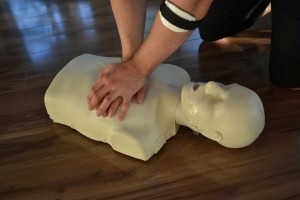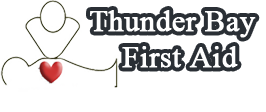A thrombotic stroke occurs when a blood clot or a thrombus forms in one of the arteries supplying in the brain. These blood clots are usually due to the build up of fatty deposits (plaques) in arteries that are already narrow resulting to less blood flow to an area of the brain. A thrombotic stroke is a type of ischemic stroke. Moreover, a thrombotic stroke may be preceded by one or more transient ischemic attacks (TIA), also called a mini-stroke.
The build up of fatty deposits, calcium and other clotting factors in carried in the blood leads to the development of a thrombus. The build up is recognized by the body as an injury to the vessel wall, thus it responds similarly to a small wound – forming blood clots. The thrombus eventually gets caught on the plaque, inhibiting blood flow. The signs and symptoms of a thrombotic stroke may occur abruptly, frequently during sleep or in the early morning. In some cases, it may occur slowly over a few hours or possibly even days, which is called stroke-in-evolution.
Thrombotic strokes are more common in the elderly, particularly in persons with atherosclerosis and high cholesterol levels. It is responsible for 50% – 75% of all cases of strokes. Thrombotic stroke may also be referred to as cerebral thrombosis or cerebral infarction.
Types of Thrombotic Stroke
There are two types of thrombotic strokes: large vessel thrombosis and small vessel thrombosis.
Large Vessel Thrombosis
- More common
- Occurs in the larger arteries of the brain, such as carotid artery or middle cerebral artery
- May cause a significantly larger damage because it will also stop blood flow to the smaller arteries supplied by the blocked artery
- Usually a combination of quick blood clot formation preceded by atherosclerosis (plaque build up)
- Common risk factor: high cholesterol
Small Vessel Thrombosis
- Also called lacunar infarction
- Occurs in a very small, deeper, penetrating arterial vessels
- Common risk factor: high blood pressure
- Warning sign of atherosclerotic disease
Signs and Symptoms of Thrombotic Stroke
Signs and symptoms of a thrombotic may be different in persons, depending on which area of the brain is affected. It can affect brain areas that control movement, balance and coordination, speech and sight. A patient suffering from a thrombotic stroke may suffering one or more of the following symptoms:
- Weakness or paralysis on one side of the body
- Abrupt, intense numbness in any part of the body
- Loss of coordination in the arms and hands
- Difficulty walking
- Confusion or dizziness
- Headache
- Inability to speak or slurred speech
- Trouble seeing in one or both eyes, such as sudden loss of vision
First Aid Management for Thrombotic Stroke
A thrombotic is a medical emergency and requires immediate medical attention. Proper administration of first aid in cases of emergencies, such as in cases of thrombotic strokes and other kinds of stroke, are taught in First Aid Courses.
- Call for an ambulance immediately.
- Reassure the patient and never leave the patient alone.
- Assist the patient in a lying position with the head and shoulders slightly elevated. If the patient is unconscious and breathing, assist the patient to their left side in a supported position.
- Perform CPR if necessary.

A thrombotic stroke is the most common type of stroke that occurs when a blood clot forms in one of the blood vessels of the brain.
Online Sources:

